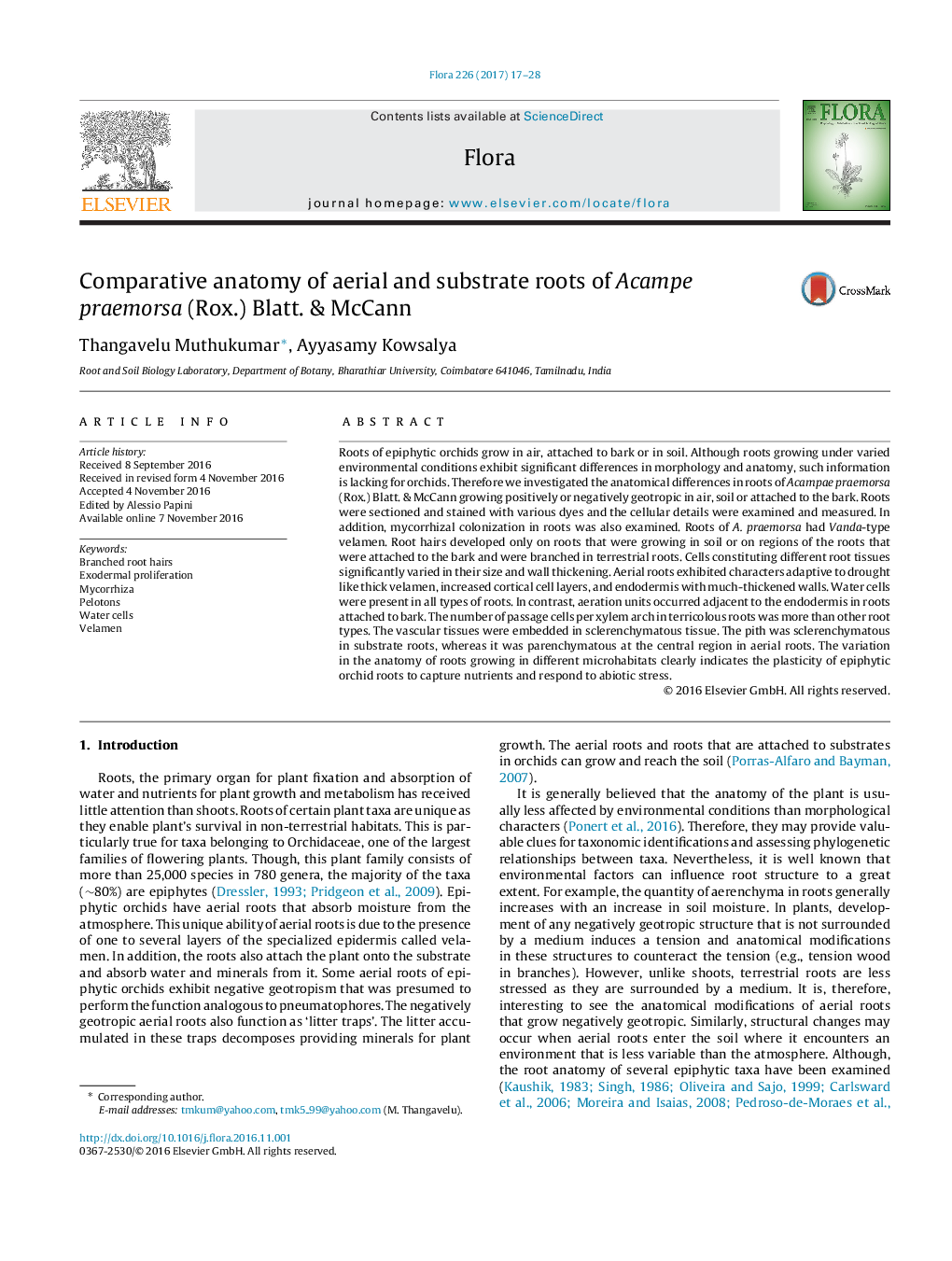| کد مقاله | کد نشریه | سال انتشار | مقاله انگلیسی | نسخه تمام متن |
|---|---|---|---|---|
| 5532437 | 1549933 | 2017 | 12 صفحه PDF | دانلود رایگان |

- Root anatomy of Acampe praemorsa varied in different microhabitats.
- Root hairs were branched when developed in soil.
- Tension induced exodermal proliferation.
- Aerial roots exhibited adaptations to drought.
- Roots in substrates were adapted to maximizing nutrient capture.
Roots of epiphytic orchids grow in air, attached to bark or in soil. Although roots growing under varied environmental conditions exhibit significant differences in morphology and anatomy, such information is lacking for orchids. Therefore we investigated the anatomical differences in roots of Acampae praemorsa (Rox.) Blatt. & McCann growing positively or negatively geotropic in air, soil or attached to the bark. Roots were sectioned and stained with various dyes and the cellular details were examined and measured. In addition, mycorrhizal colonization in roots was also examined. Roots of A. praemorsa had Vanda-type velamen. Root hairs developed only on roots that were growing in soil or on regions of the roots that were attached to the bark and were branched in terrestrial roots. Cells constituting different root tissues significantly varied in their size and wall thickening. Aerial roots exhibited characters adaptive to drought like thick velamen, increased cortical cell layers, and endodermis with much-thickened walls. Water cells were present in all types of roots. In contrast, aeration units occurred adjacent to the endodermis in roots attached to bark. The number of passage cells per xylem arch in terricolous roots was more than other root types. The vascular tissues were embedded in sclerenchymatous tissue. The pith was sclerenchymatous in substrate roots, whereas it was parenchymatous at the central region in aerial roots. The variation in the anatomy of roots growing in different microhabitats clearly indicates the plasticity of epiphytic orchid roots to capture nutrients and respond to abiotic stress.
Journal: Flora - Volume 226, January 2017, Pages 17-28